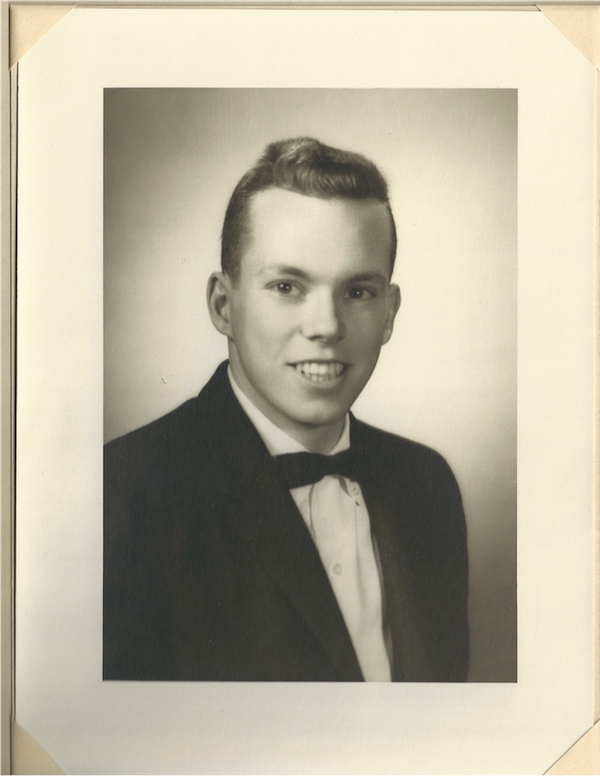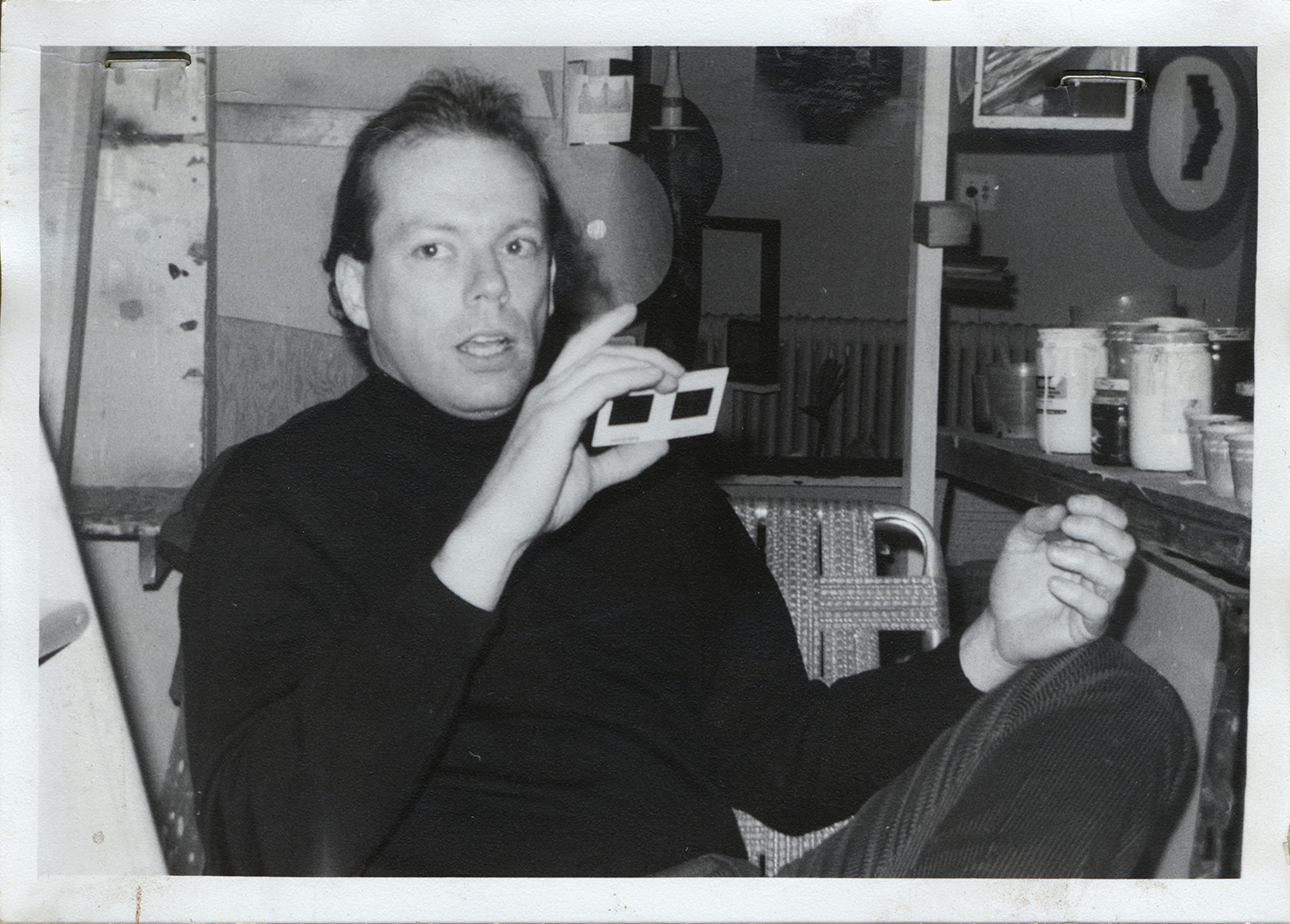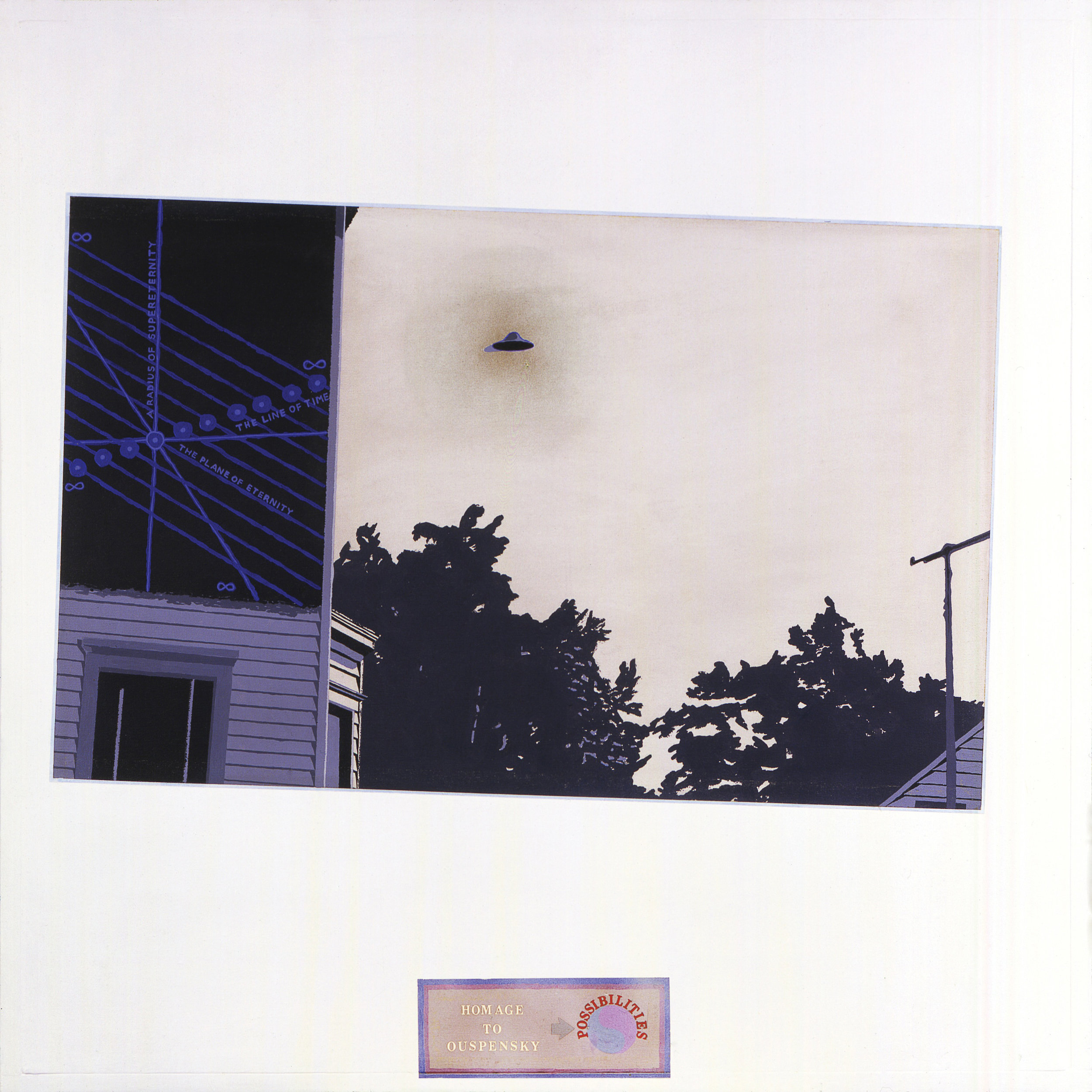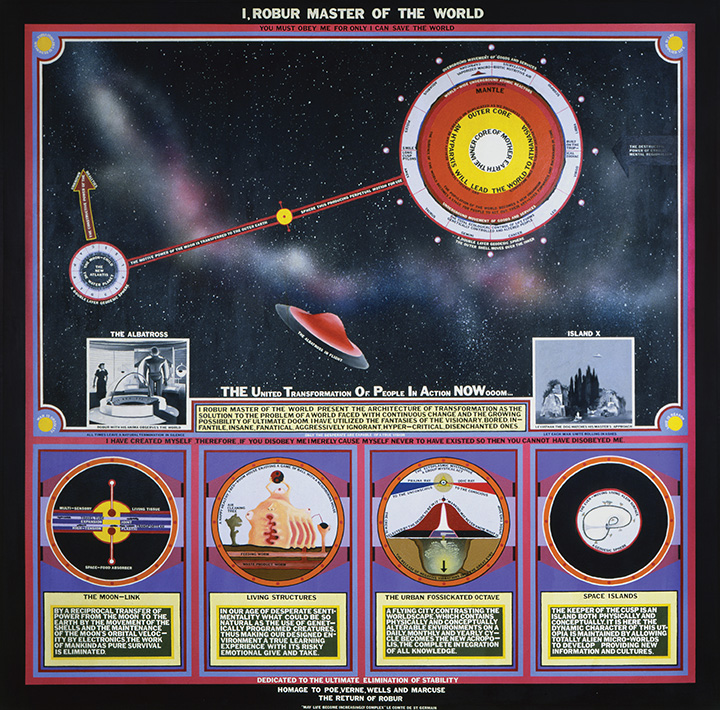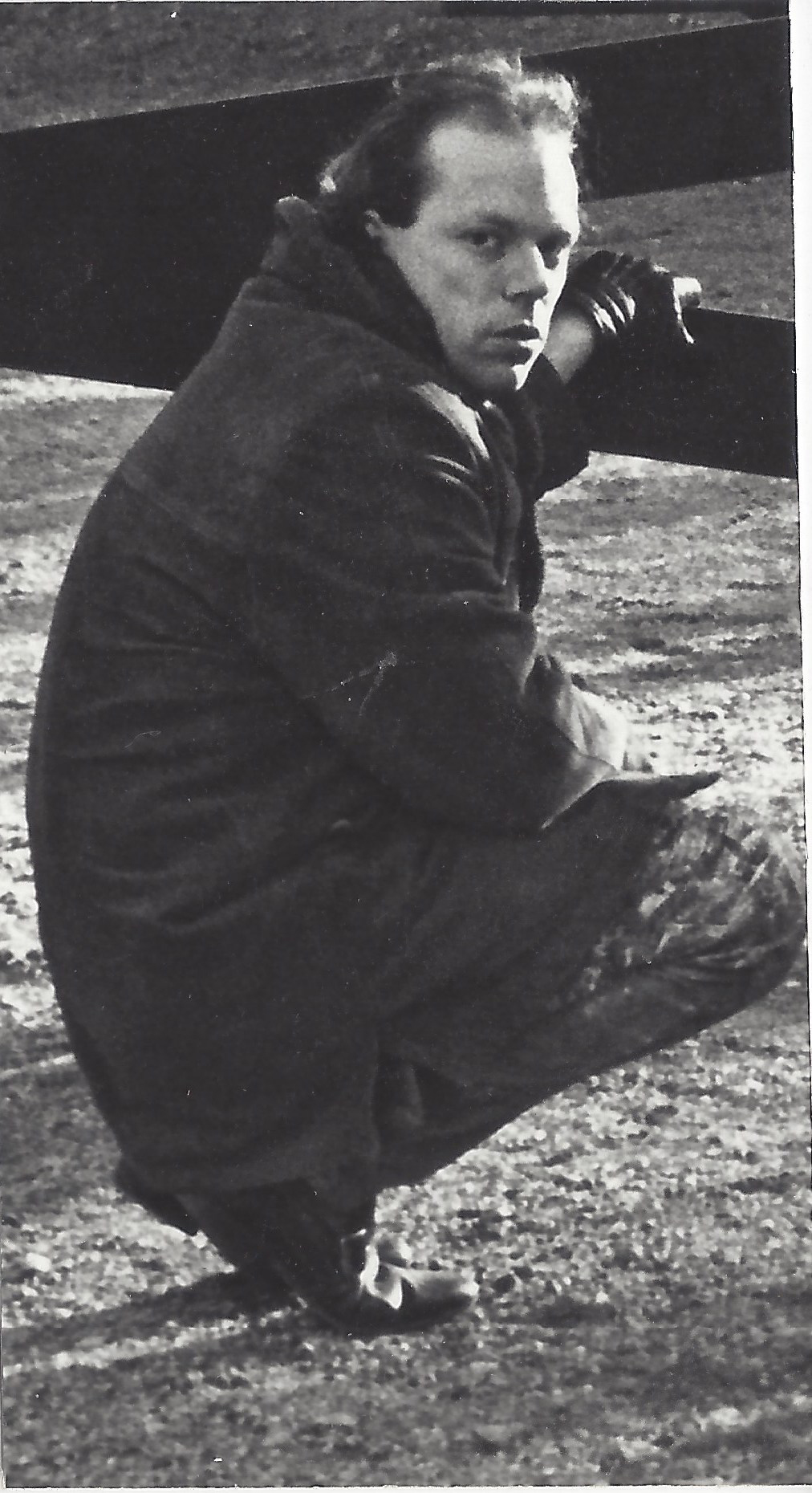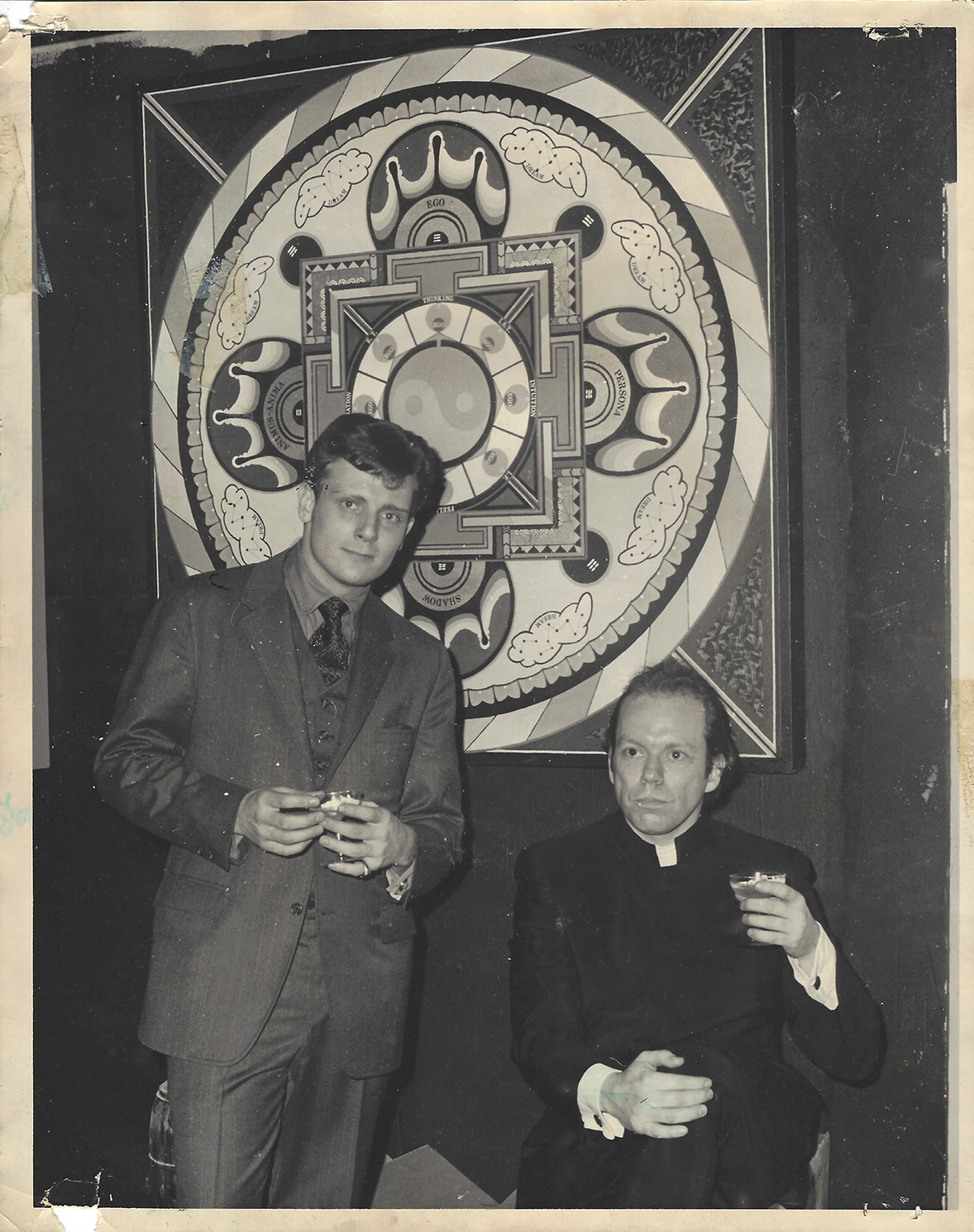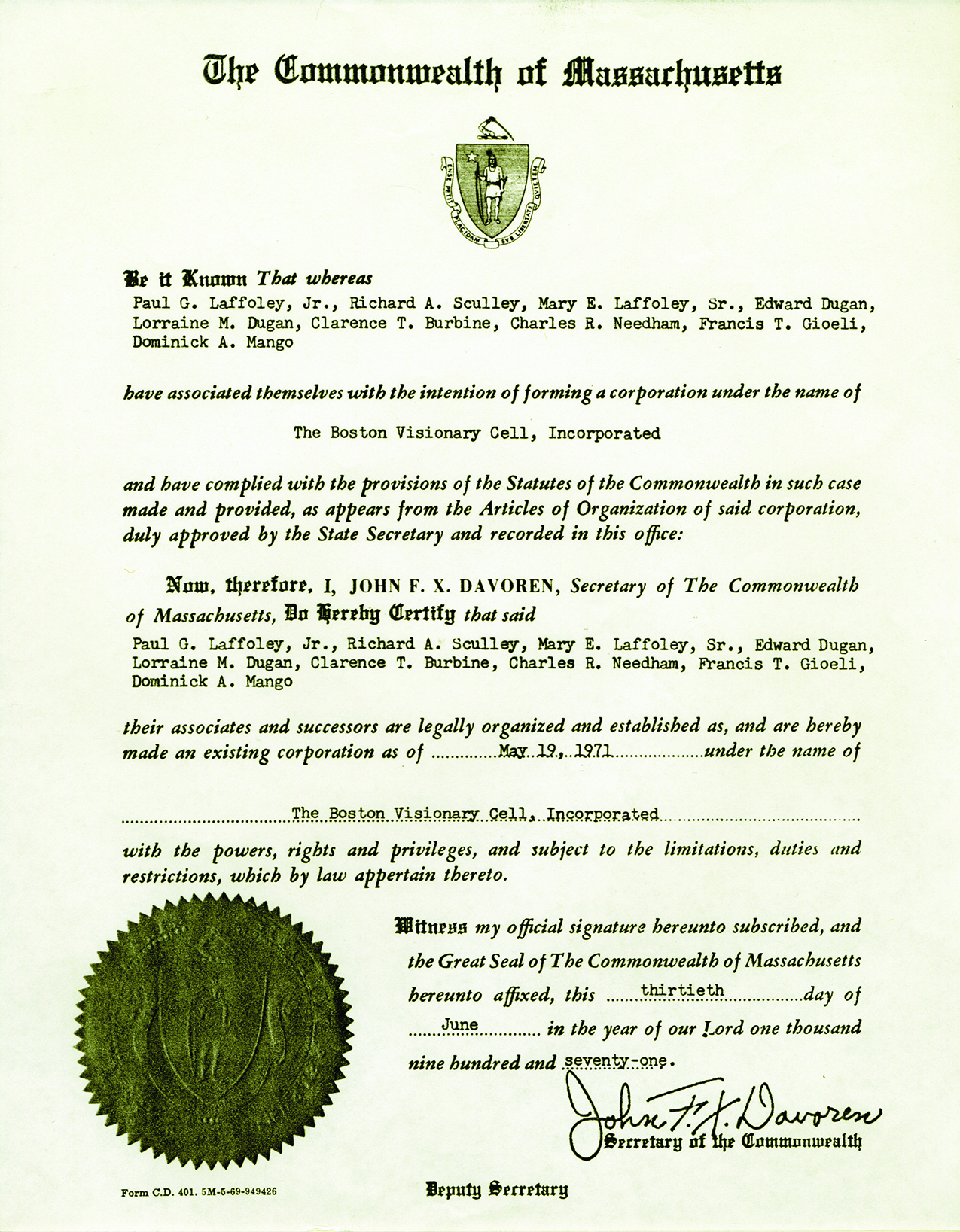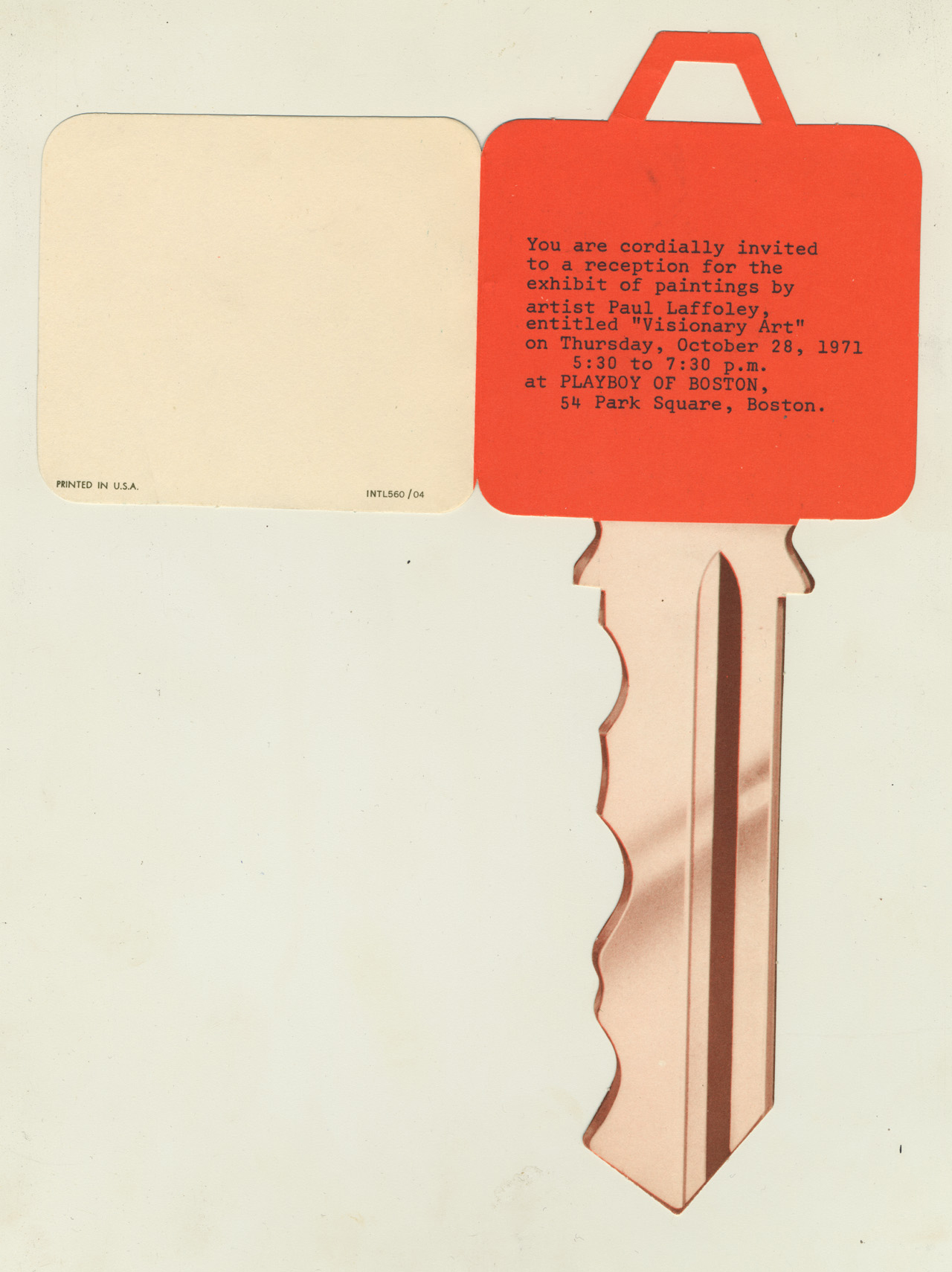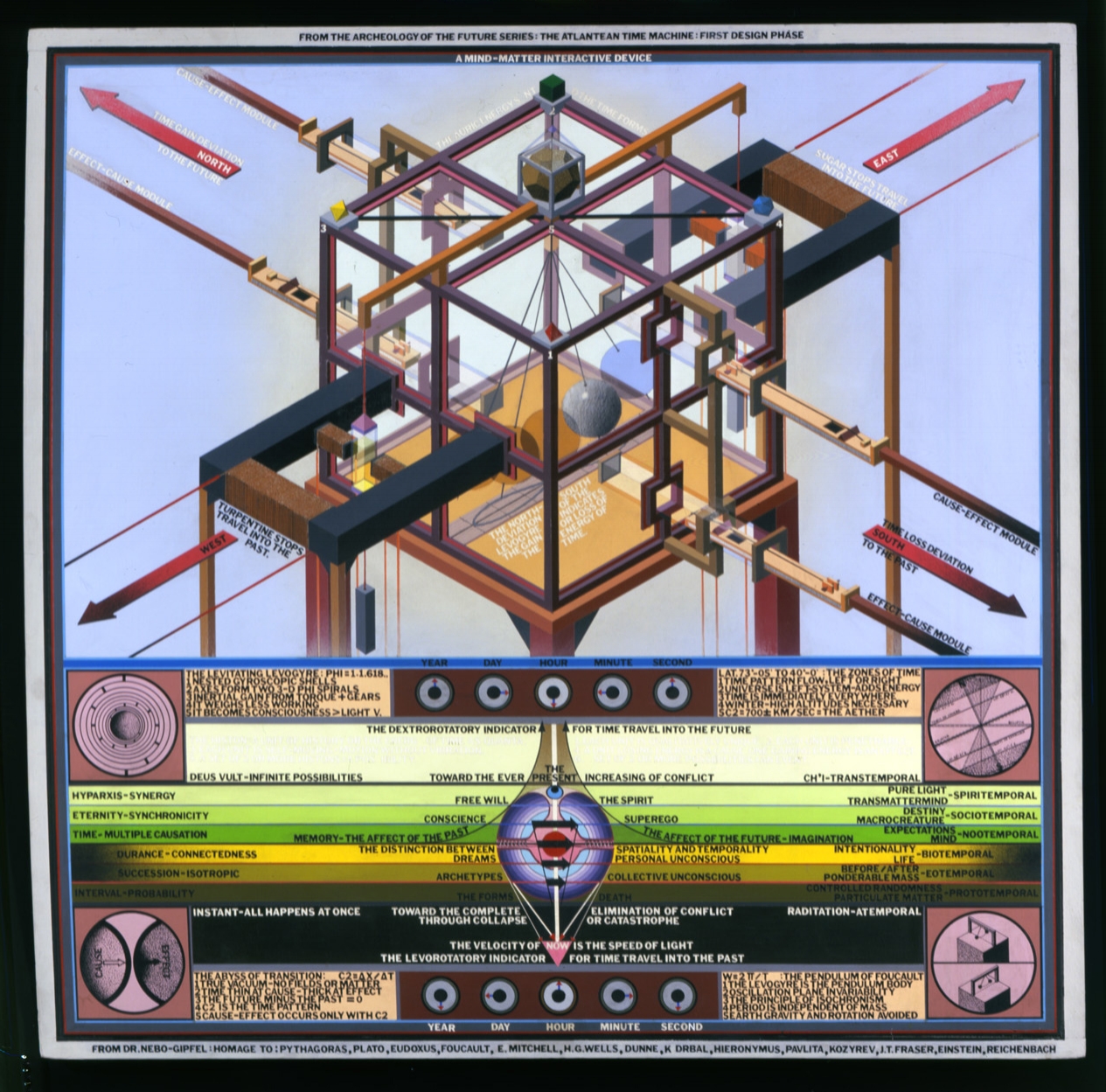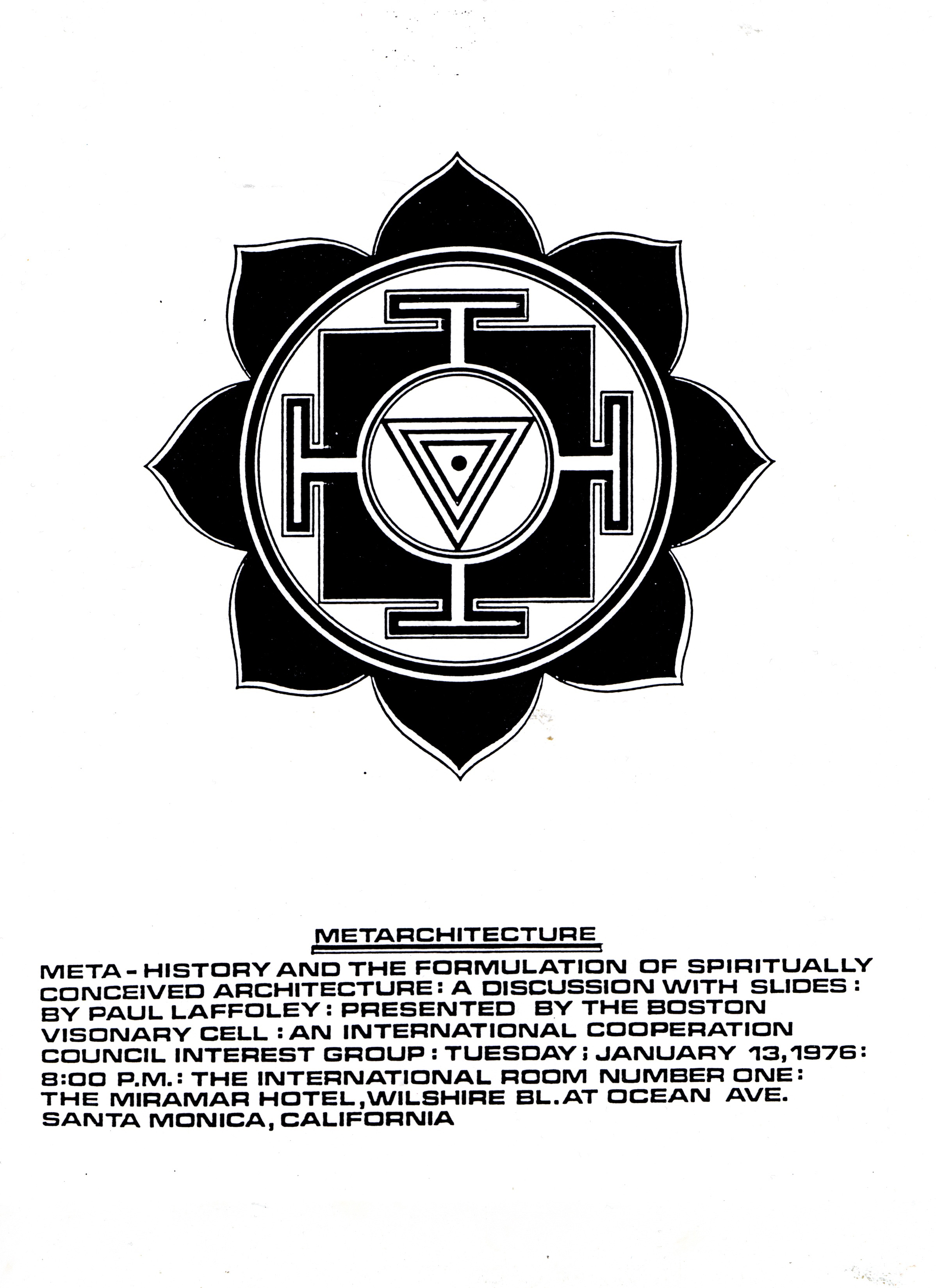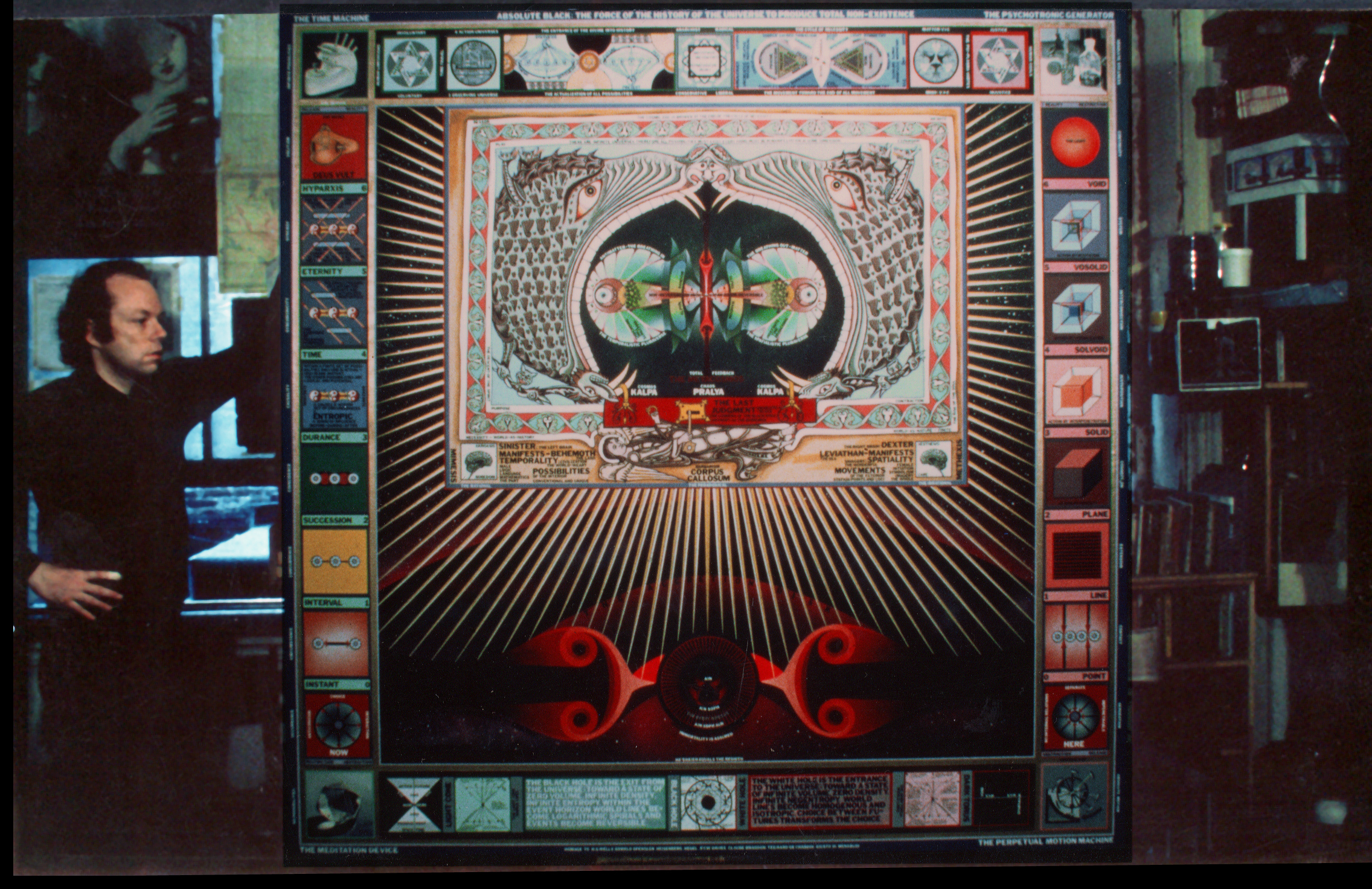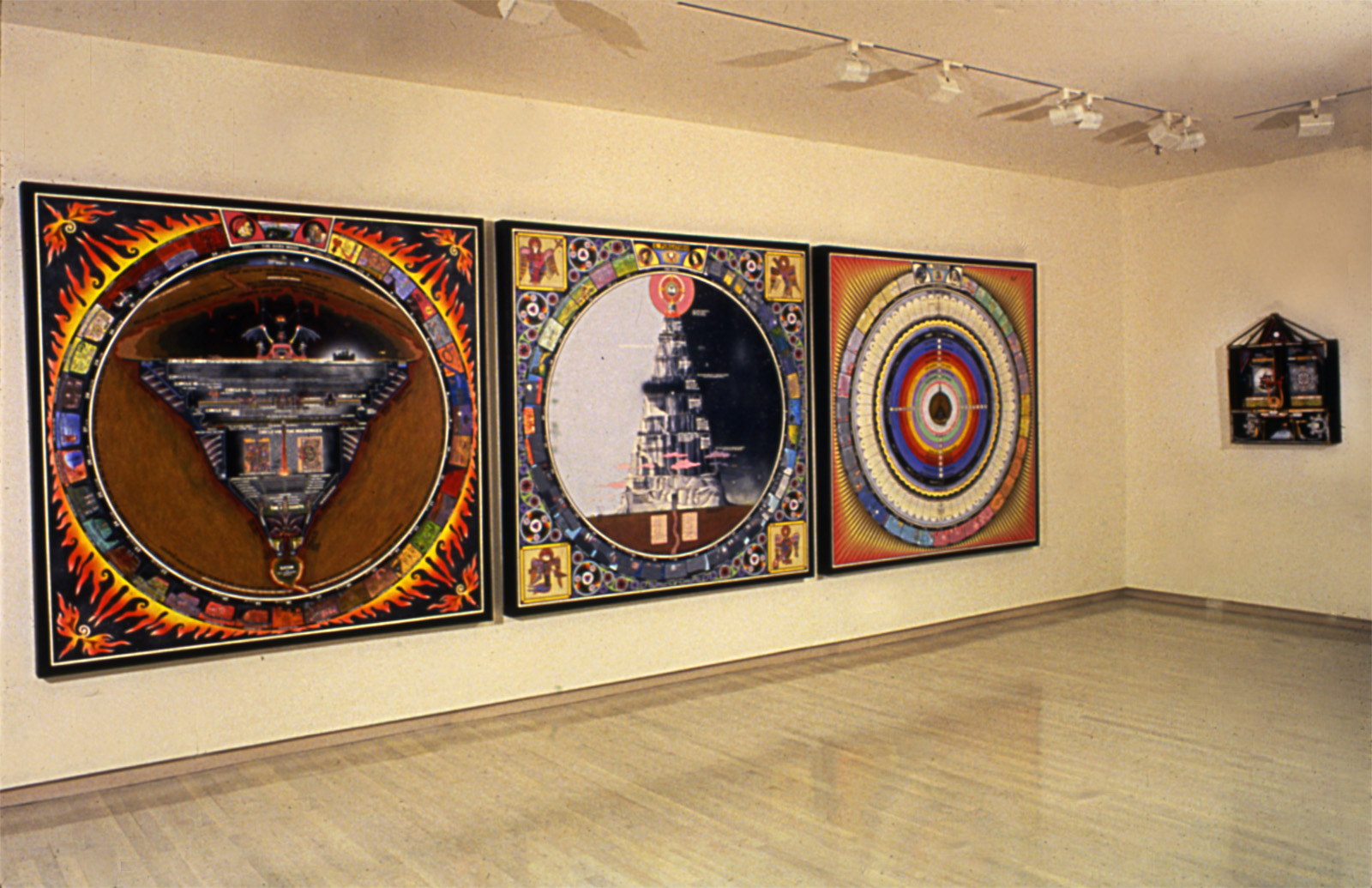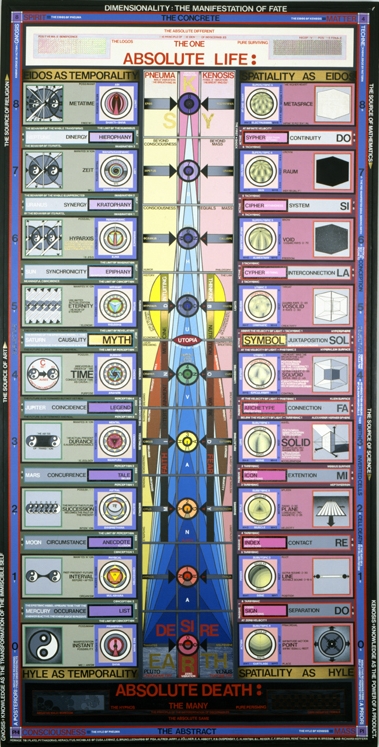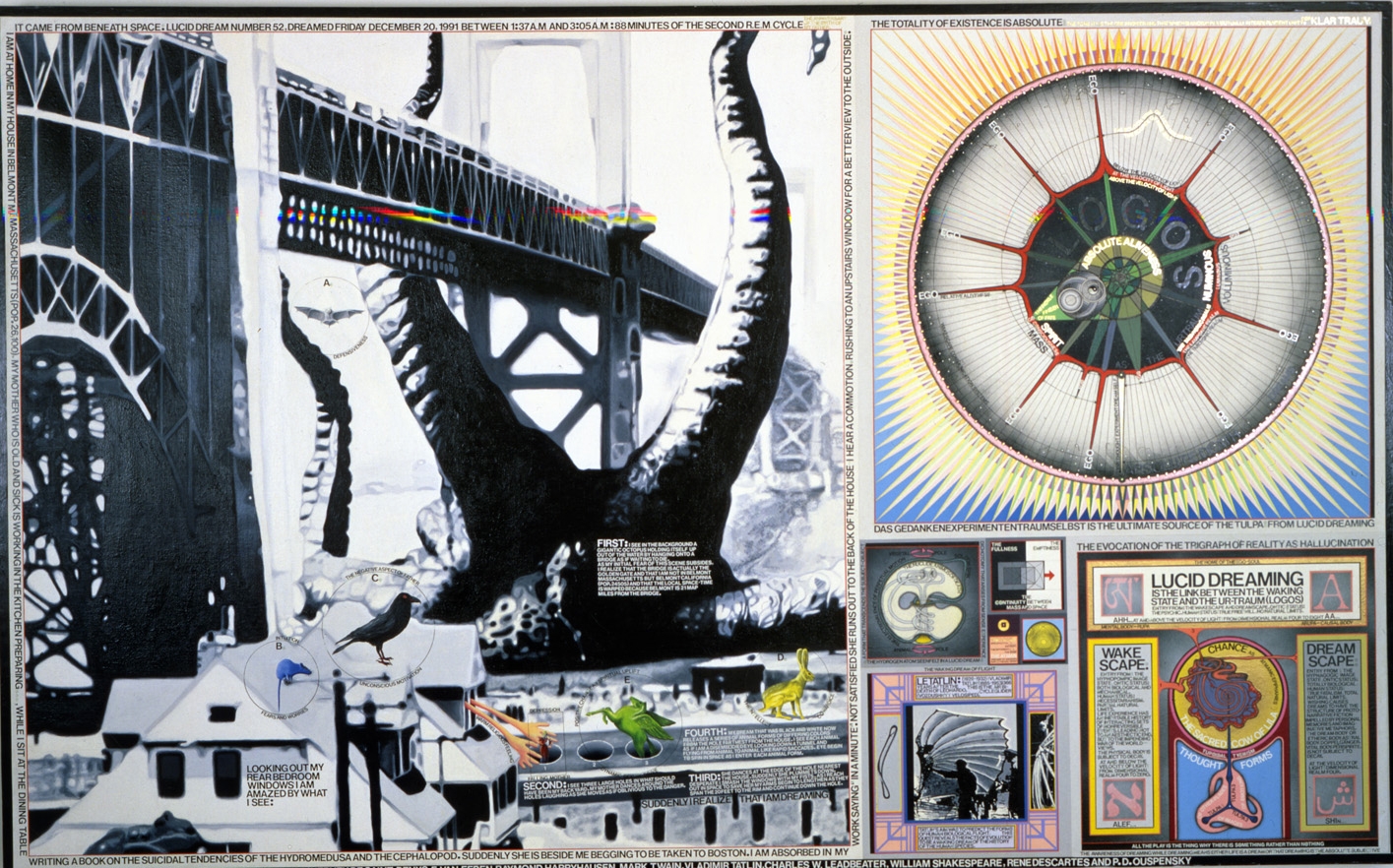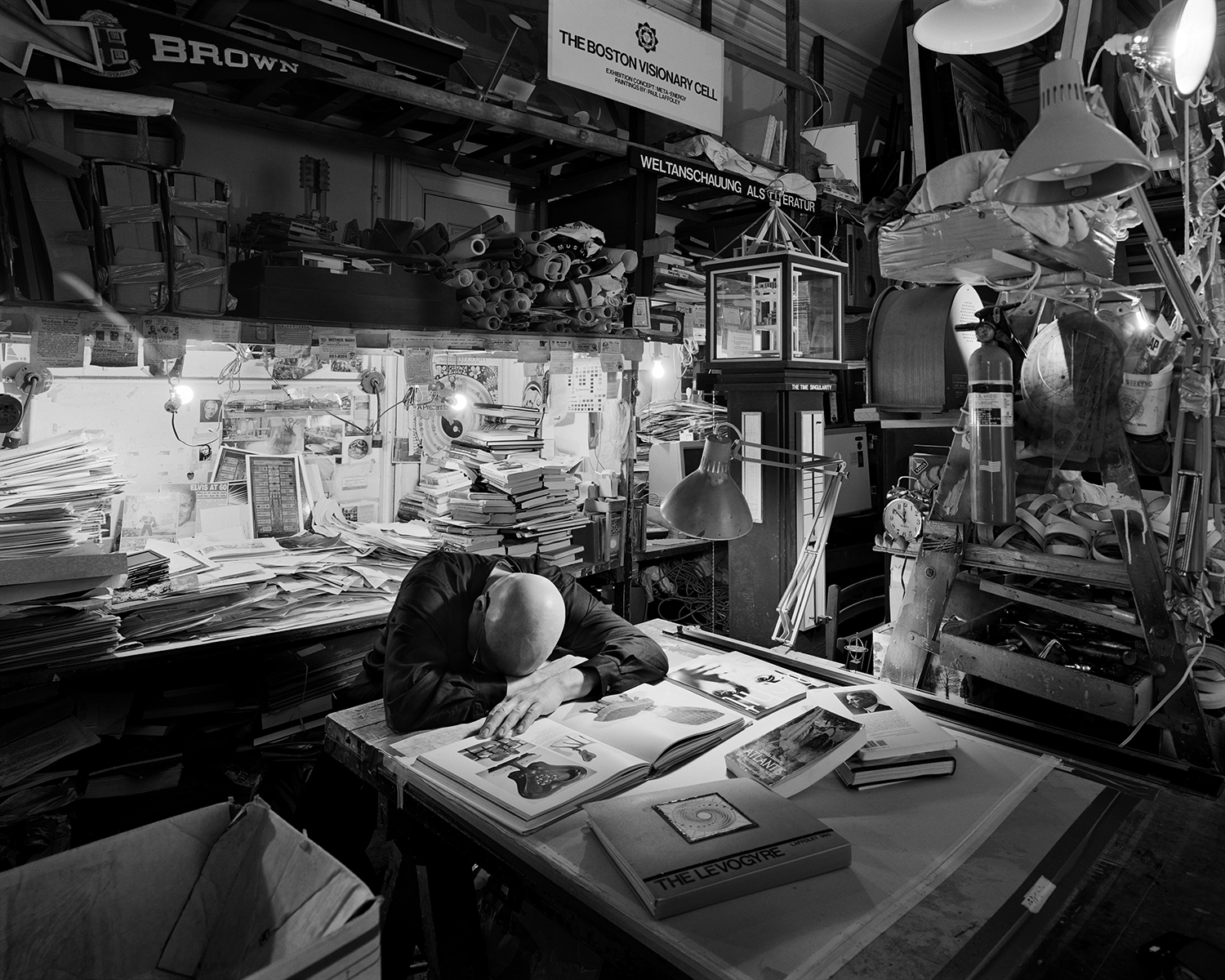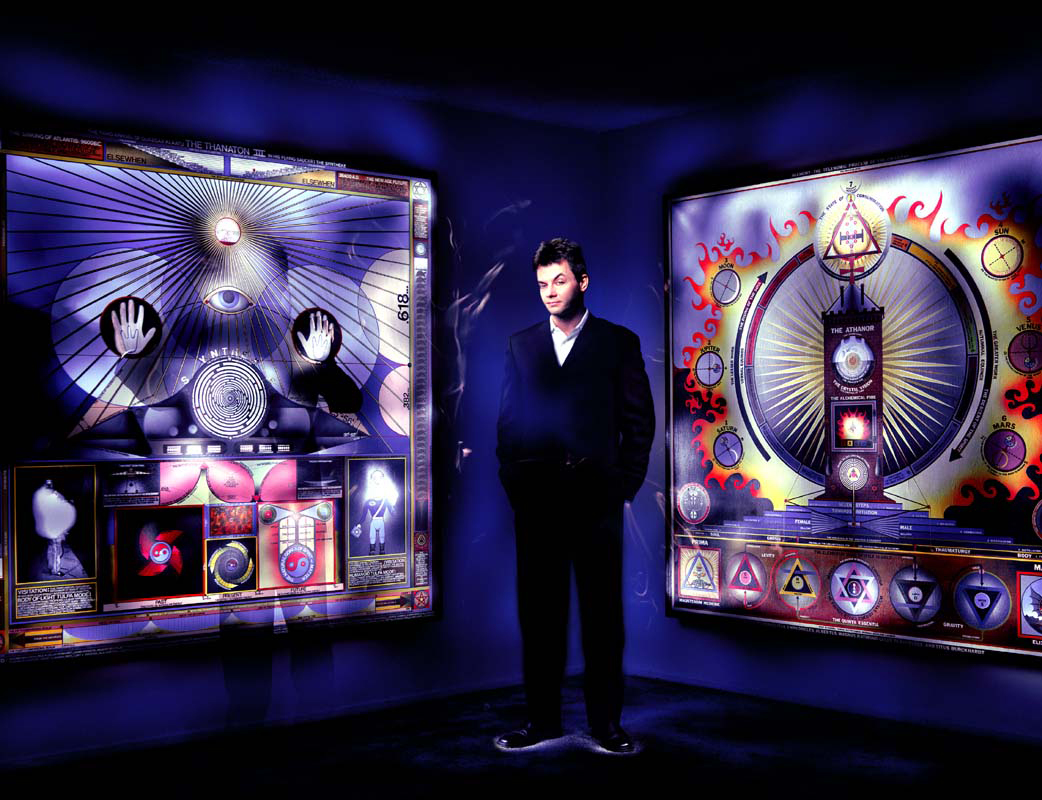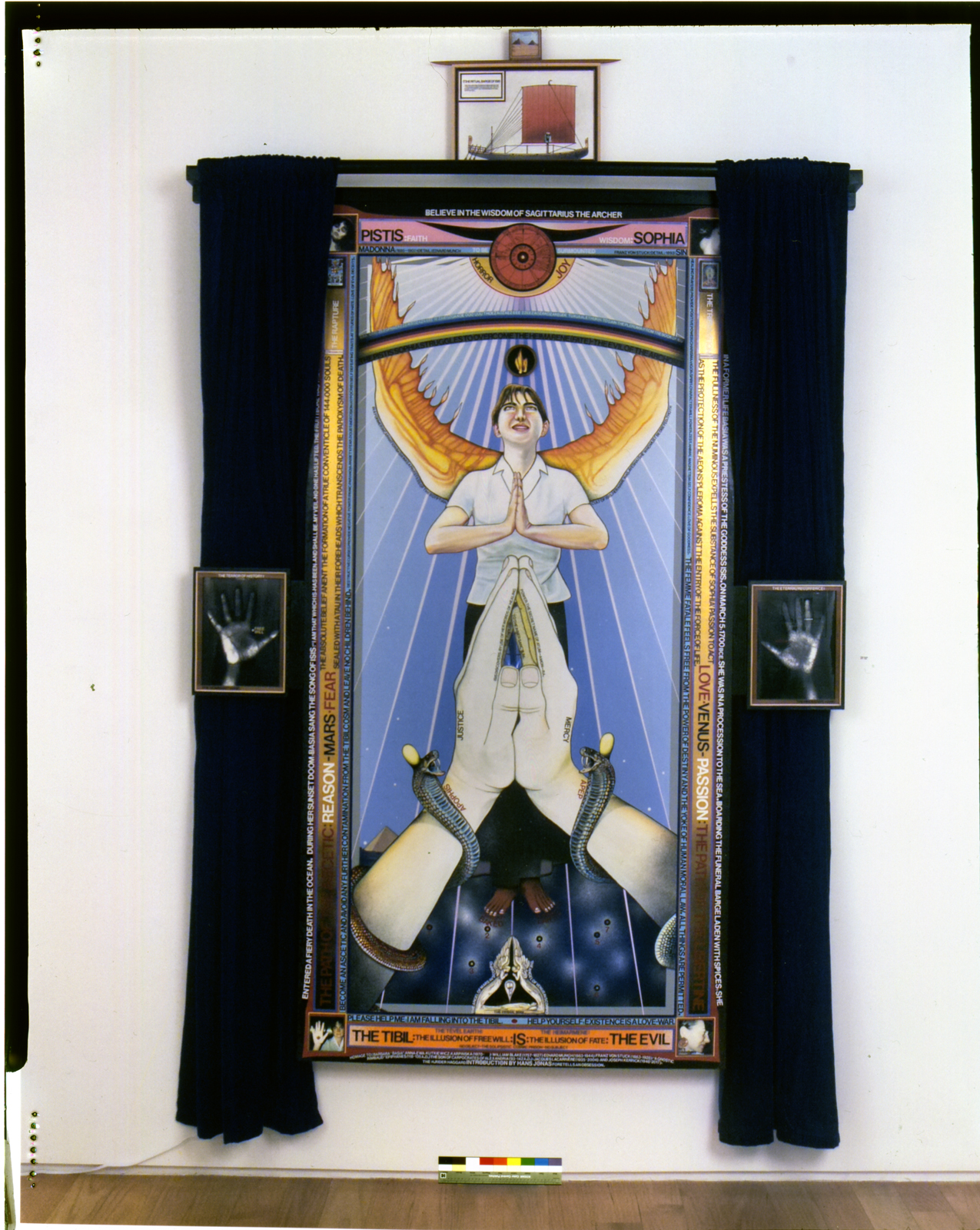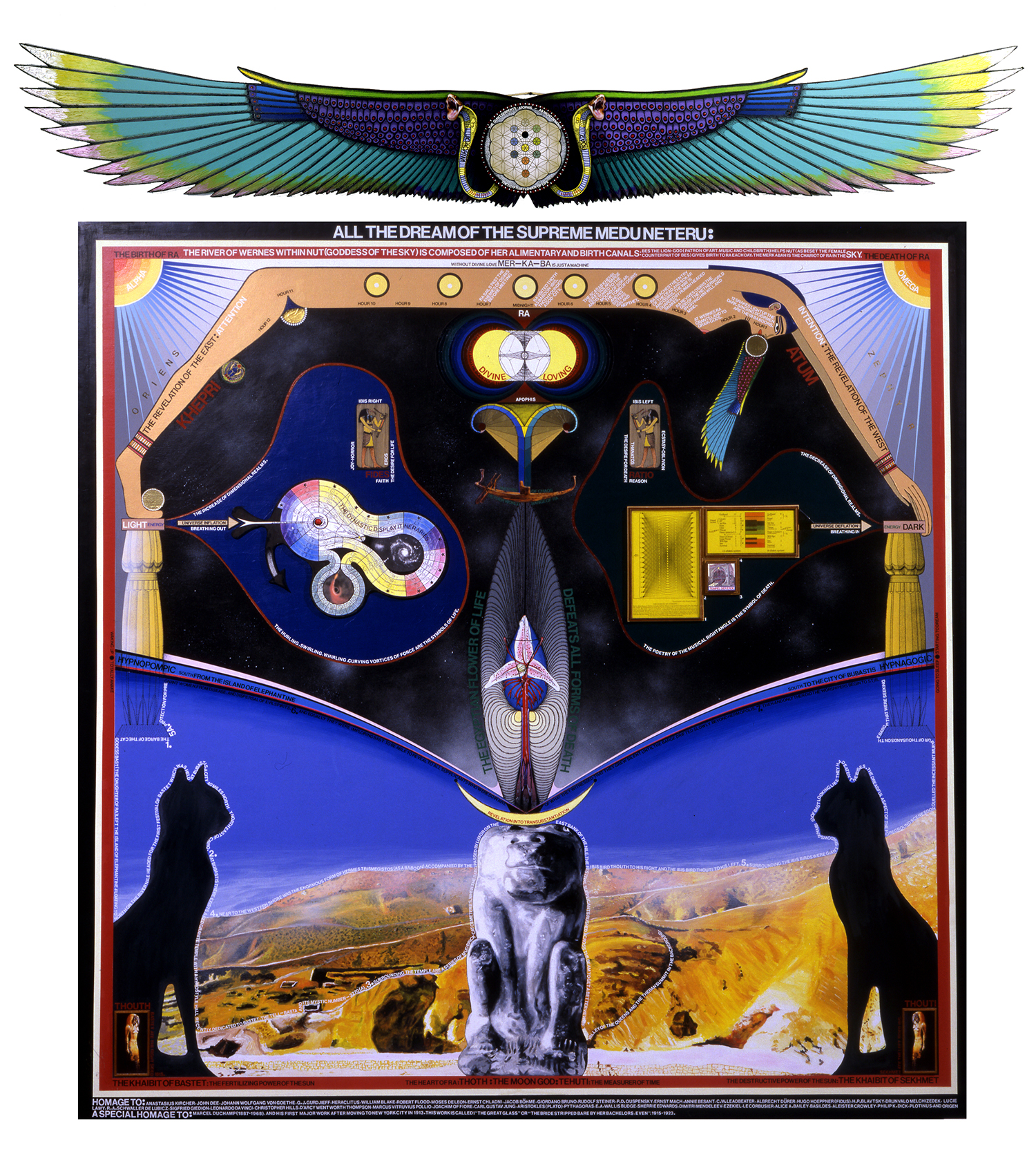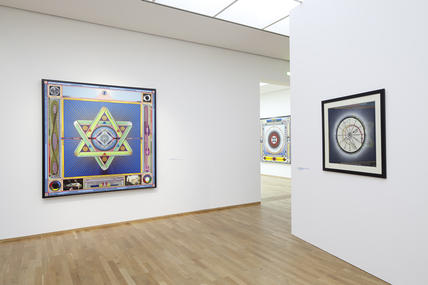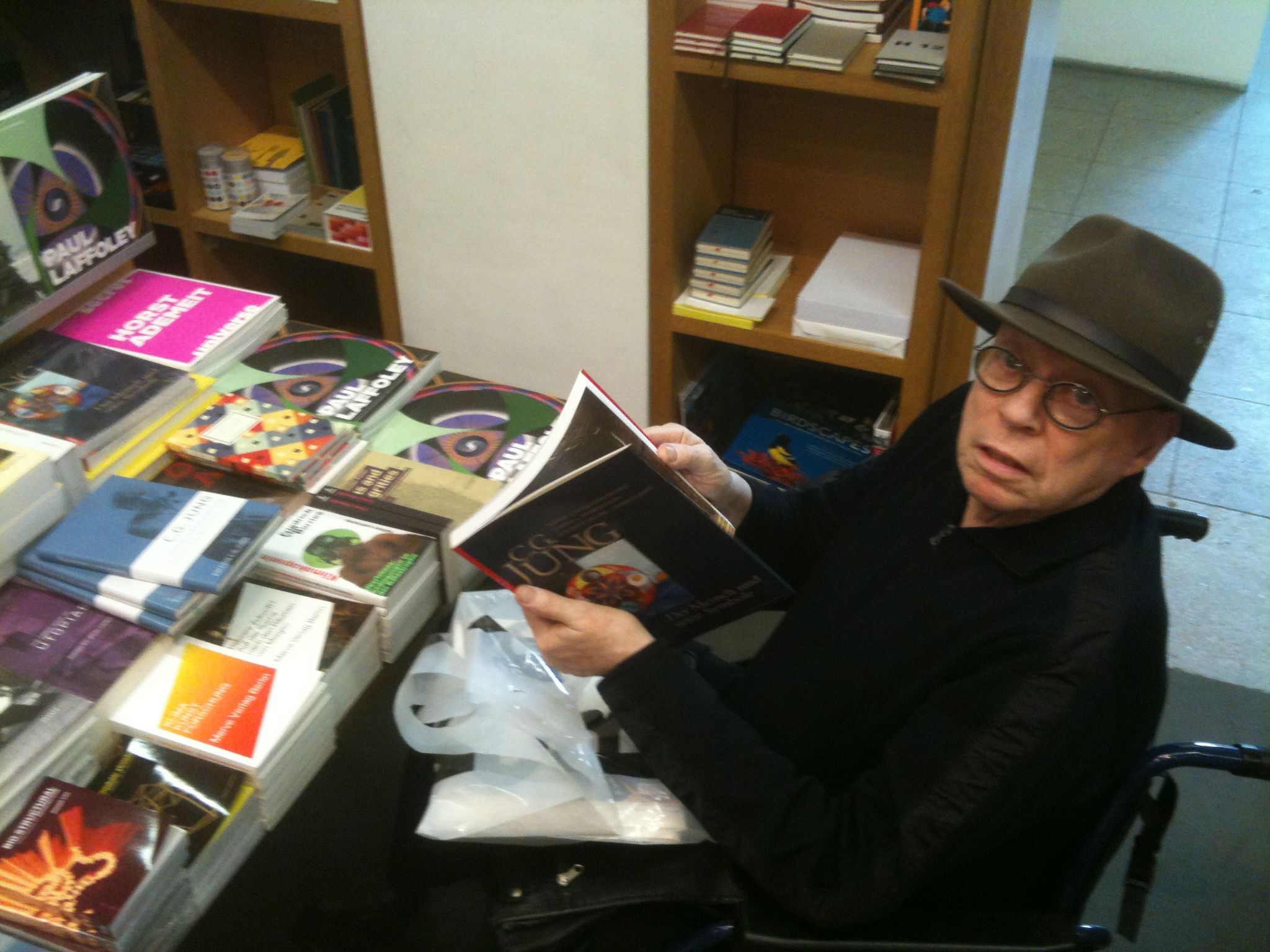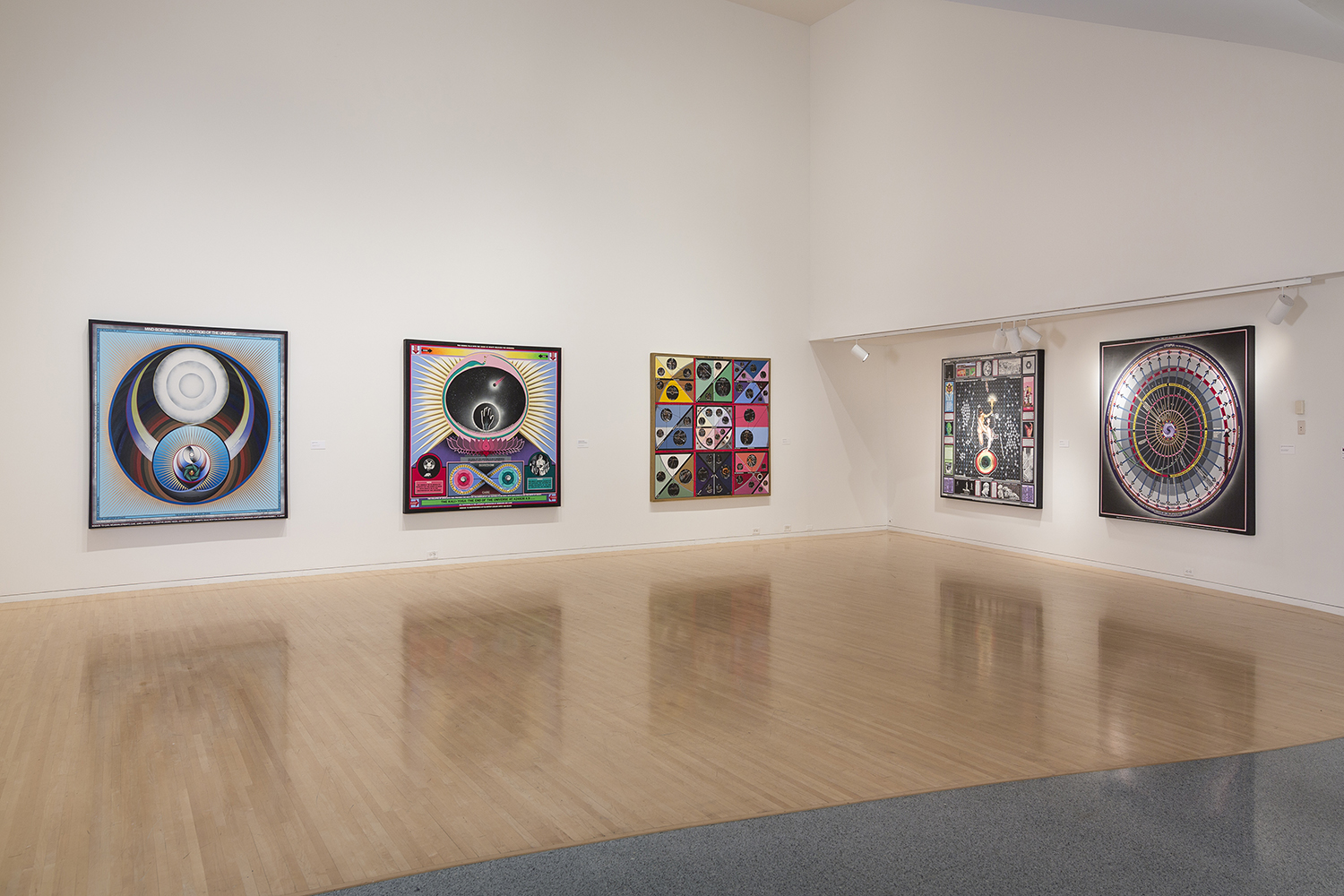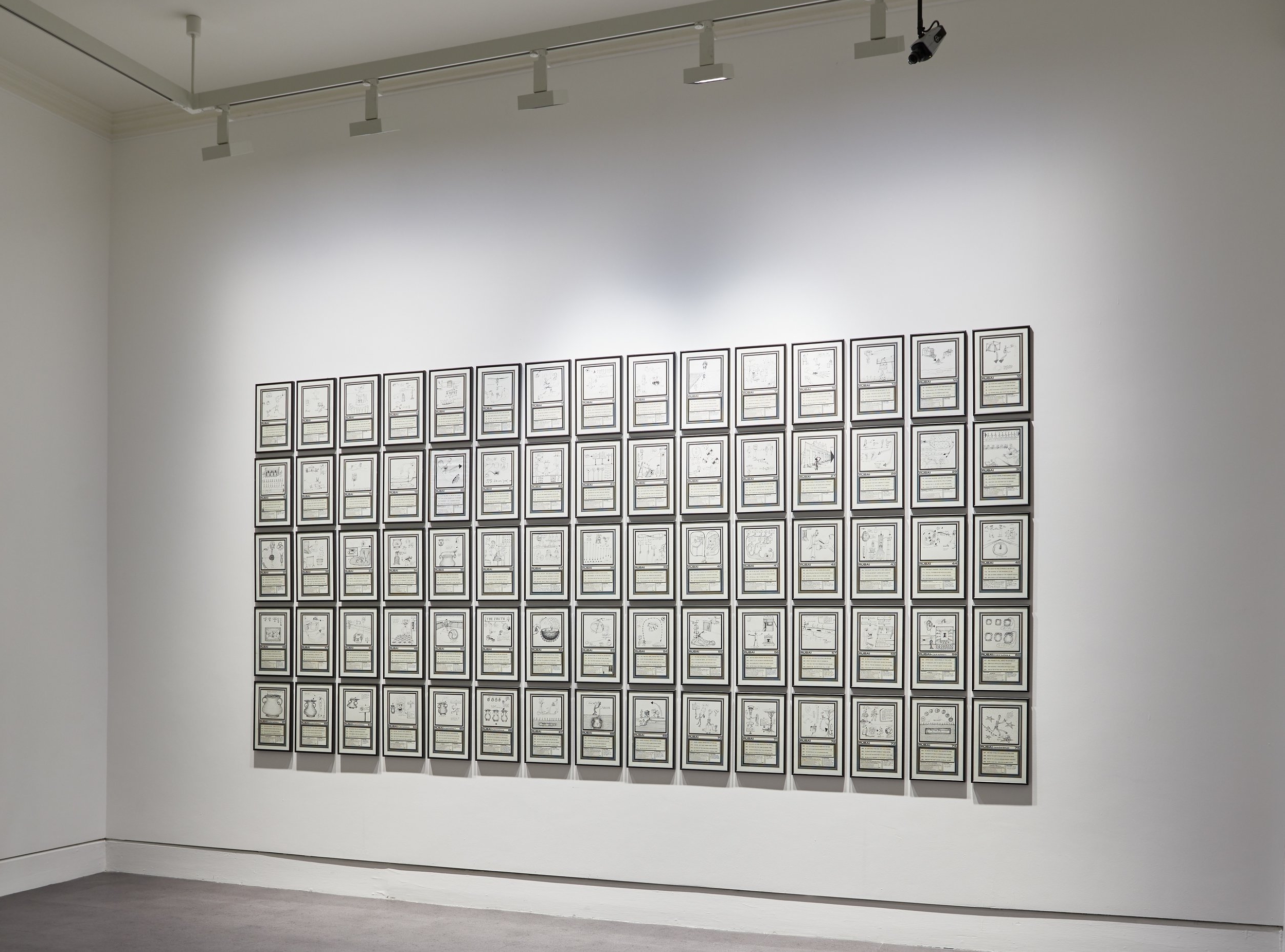The Estate of Paul Laffoley
Living and working in Boston in what he has named the “Boston Visionary Cell” (1971), Laffoley is best known for his large mandala-like paintings filled with symbols and reflecting his utopian hopes and trans-disciplinary interests. He aims to unite the boundless freedom of human imagination with the mathematical precision of the physical world.
Following studies at Harvard University and Brown University with honors in the Classics, Philosophy and Architecture, Laffoley came to New York in 1962. He began as a studio assistant to the visionary Frederick Kiesler, and was recruited for late night TV viewing by Andy Warhol. Following a dismissal by Kiesler, Laffoley worked for 18 months on design for the World Trade Center Towers (floors 15 to 45) with Emery Roth & Sons under the direction of architect Minoru Yamasaki. Following his suggestion that bridges be constructed between the two towers for safety, Yamasaki summarily fired him. Returning to Belmont in 1965, he completed the first paintings of a mature style in the household basement against the wishes of his father. On Christmas Day, 1968, after a quarrel with a first studio partner, Laffoley was in immediate need of a studio and living accommodations. Having only one day to relocate, Paul found an empty room on the second floor of a downtown office building at 36 Bromfield Street in Boston, and immediately moved in. This studio would become known as the Boston Visionary Cell.
Laffoley began to organize his ideas in a format related to eastern mandalas that had captivated his interest since childhood. This format was quickly employed to explore Operating Systems, Psychotronic Devices, Lucid Dreams, Meta-Energy and Utopian theory. Each painting is conceived of as “structured singularity” frequently taking one to three years to complete.
In 1989, Kent Gallery compiled and published the first monogram on Laffoley entitled The Phenomenology of Revelation. Laffoley also obtained his formal Architectural License in October 1990. His first museum retrospective was in 1999 resulting in the publication of the second Laffoley monograph entitled Paul Laffoley:Architectonic Thought-Forms: 1967-1999, to the Brink of the Bauharoque. More recently, his work has been presented in depth at the Palais de Tokyo, Paris (2009), Hamburger Bahnhoff, Berlin (2012), Hayward Gallery, London (2013), the Henry Art Gallery, Seattle (2013) and the Yerba Buena Center for the Arts, San Francisco (2013).
Forthcoming in spring of 2016, the University of Chicago Press will publish The Essential Paul Laffoley including nearly one hundred of Laffoley’s works along with his accompanying “thought form” texts specific to each painting that comment on each particular content. Together with an introduction by editor and archivist Douglas Walla, a biography by fellow artist Steven Moskowitz, and essays by scholars Linda Dalrymple Henderson and Arielle Saiber, this book is a long-awaited celebration of the theories, writings, and artworks of an extraordinary mind.

